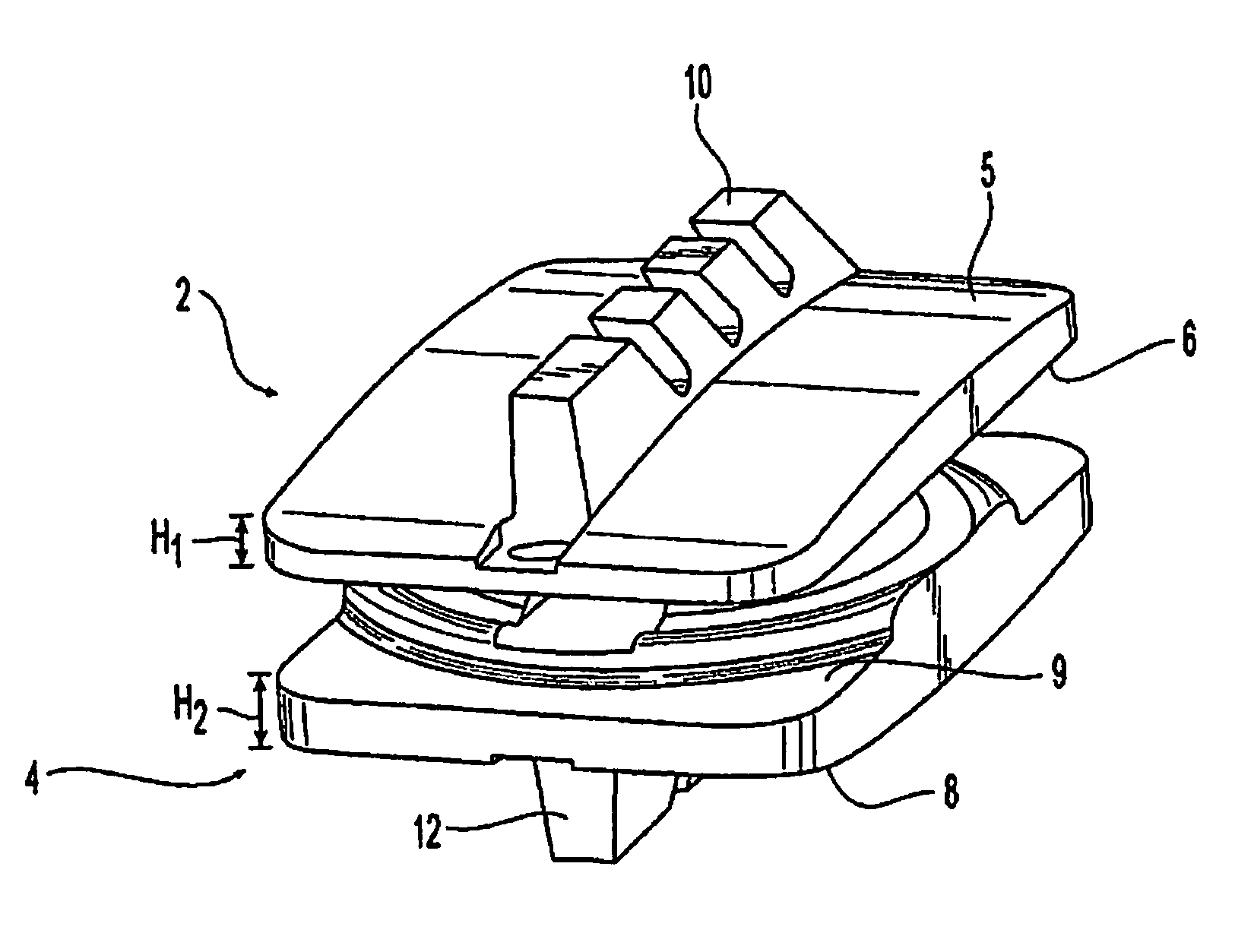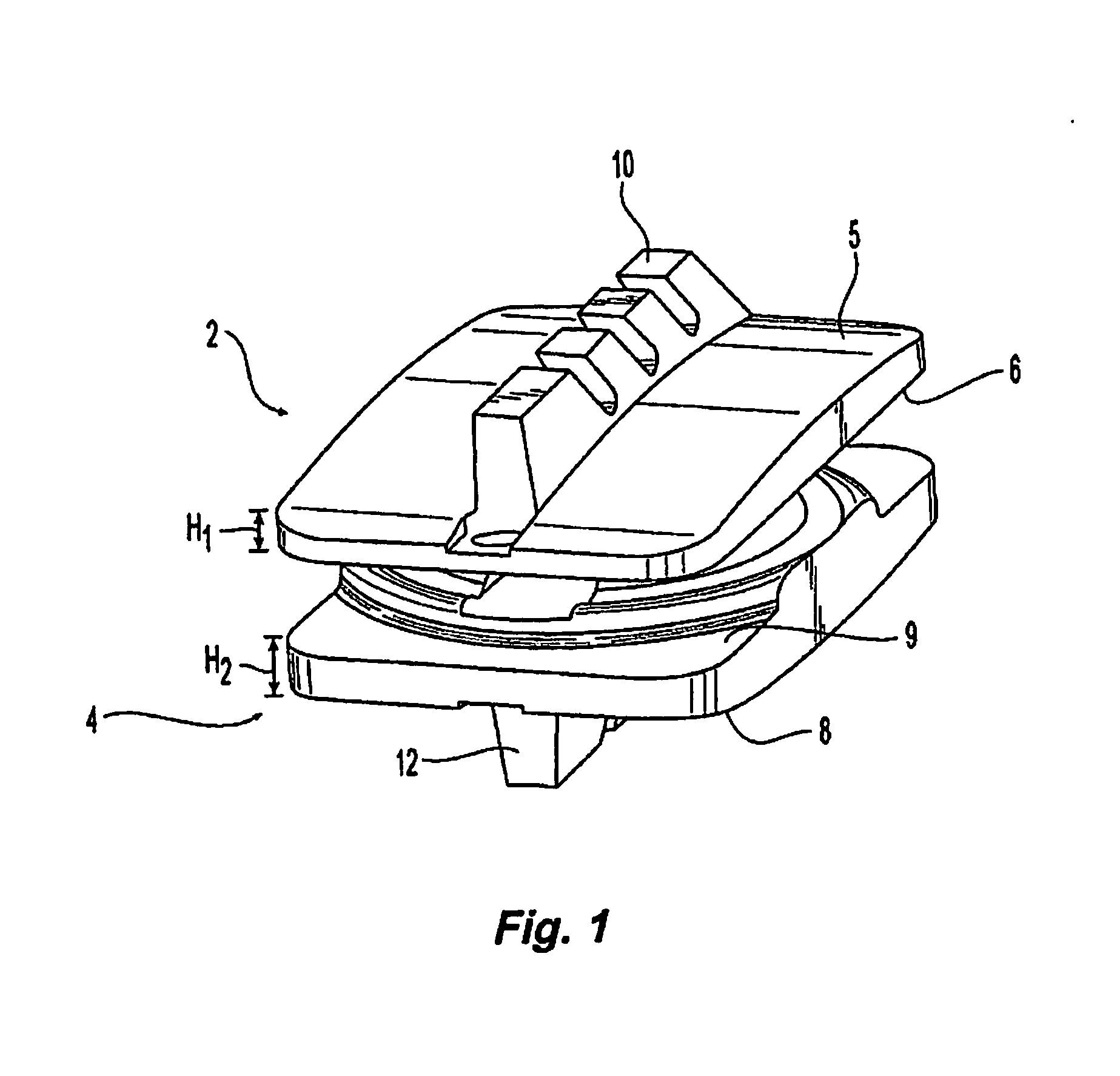Prosthetic Spinal Disc Replacement and Methods Thereof
a spinal disc and prosthesis technology, applied in the field of prosthetic spinal discs, can solve the problems of spinal disc displacement or damage, leg pain, loss of muscle control, persistent or disabling back pain, etc., to enhance stability of the stabilizing body, and facilitate the insertion of prosthetic discs
- Summary
- Abstract
- Description
- Claims
- Application Information
AI Technical Summary
Benefits of technology
Problems solved by technology
Method used
Image
Examples
Embodiment Construction
[0063]Embodiments of the invention will now be described. The following detailed description of the invention is not intended to be illustrative of all embodiments. In describing embodiments of the present invention, specific terminology is employed for the sake of clarity. However, the invention is not intended to be limited to the specific terminology so selected. It is to be understood that each specific element includes all technical equivalents that operate in a similar manner to accomplish a similar purpose.
[0064]The present disclosure relates generally to prosthetic spinal discs for replacing a damaged disc between two vertebrae of a spine. In particular, the intervertebral prosthetic discs are provided with two connections for facilitating implantation and removal, and intervertebral prosthetic discs which offer primary and secondary stability, for example, in the form of L-shaped pins or spikes. Various instruments, aids, and other devices for implanting the various prosthe...
PUM
| Property | Measurement | Unit |
|---|---|---|
| angle | aaaaa | aaaaa |
| angle | aaaaa | aaaaa |
| height | aaaaa | aaaaa |
Abstract
Description
Claims
Application Information
 Login to View More
Login to View More - R&D
- Intellectual Property
- Life Sciences
- Materials
- Tech Scout
- Unparalleled Data Quality
- Higher Quality Content
- 60% Fewer Hallucinations
Browse by: Latest US Patents, China's latest patents, Technical Efficacy Thesaurus, Application Domain, Technology Topic, Popular Technical Reports.
© 2025 PatSnap. All rights reserved.Legal|Privacy policy|Modern Slavery Act Transparency Statement|Sitemap|About US| Contact US: help@patsnap.com



